Characteristics and description of the variety of peppers Hercules
Hercules sweet peppers are very popular with large farmers and smallholders. This is due to the fact that this vegetable is used for the preparation of various dishes and preservation. To ensure high yields, it is necessary to choose the right variety. Indeed, for the normal growth and fruiting of a plant, certain weather conditions are necessary.
As a result, experts recommend paying attention to the varieties of domestic selection. This is due to the fact that they are adapted to the unpredictable climate that is inherent in our region. Hercules F1 pepper is especially popular here.
Characteristics
Before proceeding with the selection, it is necessary to study the description of the variety. This will allow you to assess how relevant it is to grow a crop in a particular region. As for the Hercules pepper, it has small semi-spreading bushes, the height of which reaches no more than 0.5 m. Dark green leaves are of medium size and slightly wrinkled structure.
Against the background of a small amount of foliage, large fruits stand out, which have a bright red hue characteristic of this variety.
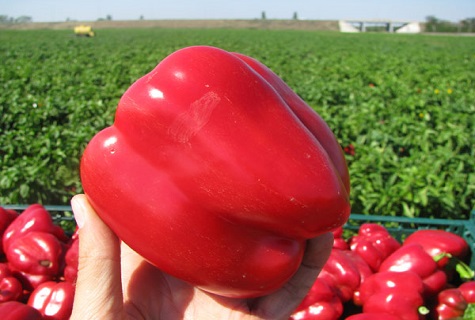
Hercules belongs to the early ripening varieties. So, you can get a harvest 3 months after planting the plant. The fruit is cuboid. The average pepper reaches 12 cm in length and 11 cm in width. Taking into account such dimensions, it is worth noting that its weight is 200 g and more.
The fruit gets its red hue during biological maturity. In the period of technical maturity, it has a dark green tint.
Interesting: this kind of pepper can be eaten both during biological and technical maturity. This is due to the fact that, despite the different shade, the fruit has remarkable taste properties. The pulp is completely devoid of bitterness.
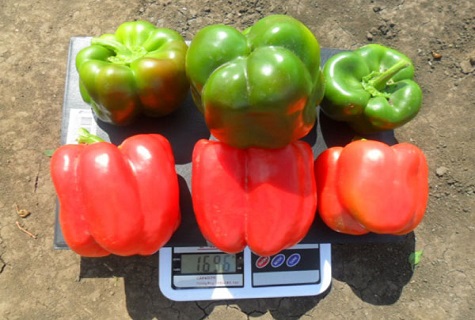
Hercules peppers have a juicy pulp with a rich aromatic odor. A characteristic feature of the variety is its thick pulp, the thickness of which reaches 7 mm. Thanks to this, the fruits are ideal for canning, as evidenced by numerous reviews.
It is not in vain that this variety of pepper got its name. The plant and fruit are not afraid of many diseases. It is especially worth noting the increased immunity to fusarium. But, the undoubted advantage is the high yield. So, from one bush, you can collect about 3 kg of fruit.
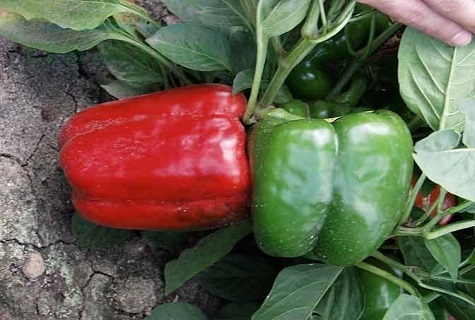
How to grow Hercules peppers
As the characteristics of this variety show, plants are grown both in unprotected soil and in greenhouses, and in other film covers. Since the bushes are small in size, there is no need to arrange a spacious film covering. 1 m2 you can place several bushes, which significantly increases the rationality of using space in the greenhouse and in the beds.
Hercules peppers are grown in seedlings. Seeds are sown in March. Thus, seedlings suitable for planting in the ground can be obtained already in mid-May. Sweet peppers are heat-loving plants. In this regard, planting of Hercules pepper in unprotected soil should be carried out after the end of the frost. In this case, the air temperature should be at least 10 FROM.

When the seedlings are prepared, they are transplanted into open ground. It should be noted that the distance between the bushes should be at least 0.5 m. This space is quite enough for normal plant growth. After planting, the seedlings are covered with foil. This will facilitate the adaptation of young plants to new germination conditions. In greenhouses, this is not necessary, since the conditions for growth in these structures are more favorable.
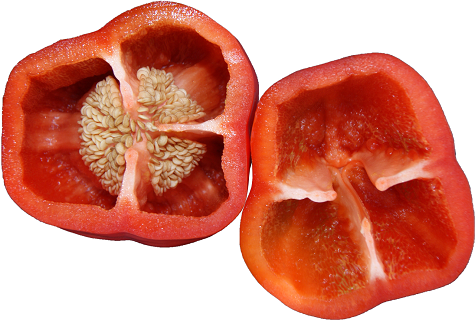
When growing peppers outdoors or in a greenhouse, there are some requirements to consider. This is especially true for the care of plants:
- Regular watering. The frequency of watering depends on the weather conditions of the region and the state of the soil. But, despite this, the plant needs to be watered at least 2 times a week. For this, settled warm water is used. Watering one bush will need about 3 liters of liquid.
- Fertilizer. During the period of flowering and formation of peppers, the plant needs feeding. For this, mineral and organic fertilizers are used. The frequency of feeding is no more than 2 times a month. At the same time, the break between them should be at least a week.
- Loosening the soil. This procedure is optional. But it should be understood that loosening will provide normal access of nutrients to the root system. As a result, plant development will improve.

Important: instead of loosening, experts recommend mulching... On the one hand, this will prevent the formation of a crust, and on the other hand, it will keep moisture in the soil for a long time.
If you follow all these requirements, the description of which is given above, then you can ensure the normal development of the plant. And as a result, ensure high yields. It is also worth noting that the fruits can be stored for a long time, without losing their taste.

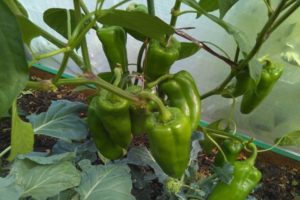
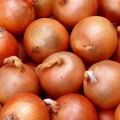





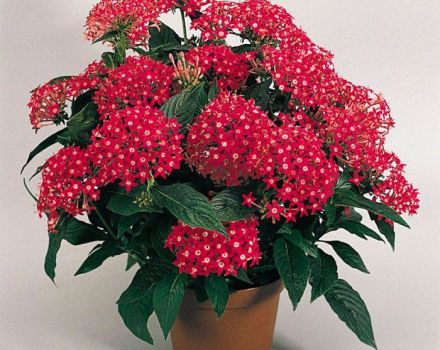

I only grow this pepper, it grows quite large and the yield is amazing. Diseases were extremely rare. When landing, I use the product BioGrowthen the pepper grows much faster.